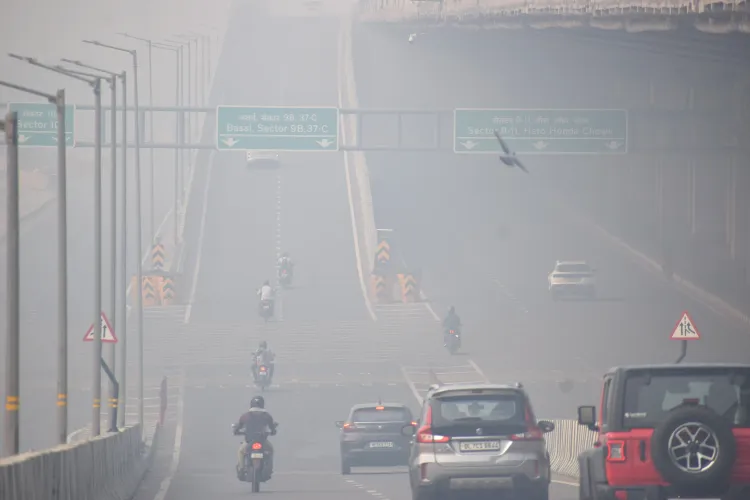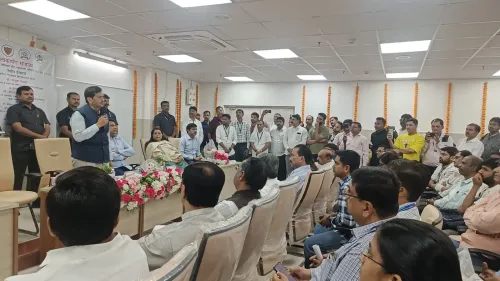Is Delhi's Air Pollution Causing Increased Health Issues?

Synopsis
Key Takeaways
- Particulate matter (PM) 2.5 levels have risen significantly post-Diwali.
- There is a noticeable increase in respiratory issues and joint pain among residents.
- Health experts recommend avoiding outdoor activities and using air purifiers.
- The air quality is expected to worsen without intervention.
- Vulnerable groups should exercise extra caution during high pollution periods.
New Delhi, Oct 21 (NationPress) Following Diwali, the average concentration of particulate matter (PM) 2.5 in the national capital has soared to 488 micrograms per cubic meter (µg/m3). On Tuesday, local doctors reported a significant uptick in cases related to respiratory problems, eye irritation, flu, and joint pain.
According to the Central Pollution Control Board (CPCB), Delhi-NCR's overall Air Quality Index (AQI) remained in the 'very poor' category, peaking at 400 the day after Diwali.
While the overall AQI was recorded at 347, certain areas experienced levels classified as 'severe.'
Dr. Uma Kumar, the Head of the Department of Rheumatology at AIIMS, New Delhi, indicated that high pollution levels can exacerbate joint diseases. Pollutants like particulate matter, nitrogen dioxide, and ozone can instigate inflammation and oxidative stress, worsening symptoms such as pain, stiffness, and fatigue in arthritis patients.
She recommended that arthritis sufferers refrain from outdoor activities, don an N95 mask, and utilize air purifiers to maintain good indoor air quality during pollution spikes.
Doctors have noted that the current pollution levels are aggravating respiratory ailments among the populace.
They highlighted that harmful gases and chemical particles in the air are leading to issues like coughs, colds, headaches, dizziness, fatigue, insomnia, and eye irritation.
General physician Dr. Amit Kumar reported a roughly 30% increase in patients visiting chest physician outpatient departments due to pollution-related health issues.
The levels of toxic gases such as carbon monoxide, nitrogen oxides, nitrogen dioxide, ammonia, and benzene have reached alarming heights.
These gases are not only worsening respiratory problems but are also adversely affecting the eyes, nose, throat, and lungs.
Dr. Kumar pointed out that five years ago, smoking was the primary contributor to Chronic Obstructive Pulmonary Disease (COPD). Now, pollution has surpassed it as the leading cause. He mentioned that even non-smokers are inhaling toxic particles equivalent to six cigarettes daily due to current pollution levels.
According to him, one cigarette generates pollution roughly equal to 64.8 AQI, whereas individuals are currently inhaling the equivalent of around 5.83 cigarettes.
City doctors have reported an influx of 300 to 350 patients daily at outpatient departments, presenting symptoms such as shortness of breath, cough, or chest tightness. Due to heightened humidity, dust and smoke particles are failing to ascend, creating a dense layer of haze and smog.
Environment expert Sharanjeet Kaur informed IANS that the air quality is expected to deteriorate further in the coming days due to atmospheric conditions.
"The AQI in Delhi has been alarmingly poor today, hovering around 345 to 350. If this pattern persists into the evening without wind, the pollutants may intensify and move into an even more severe category in the next 2-3 days," Kaur warned.
Health experts advise people, especially children, the elderly, and those with pre-existing health conditions, to stay indoors during mornings and evenings, wear masks, and use air purifiers or indoor plants.










